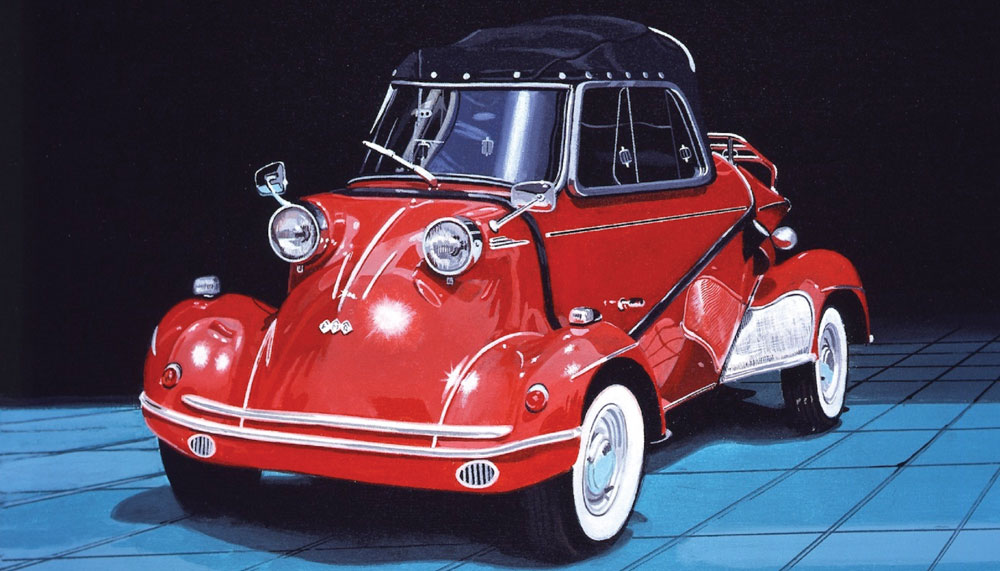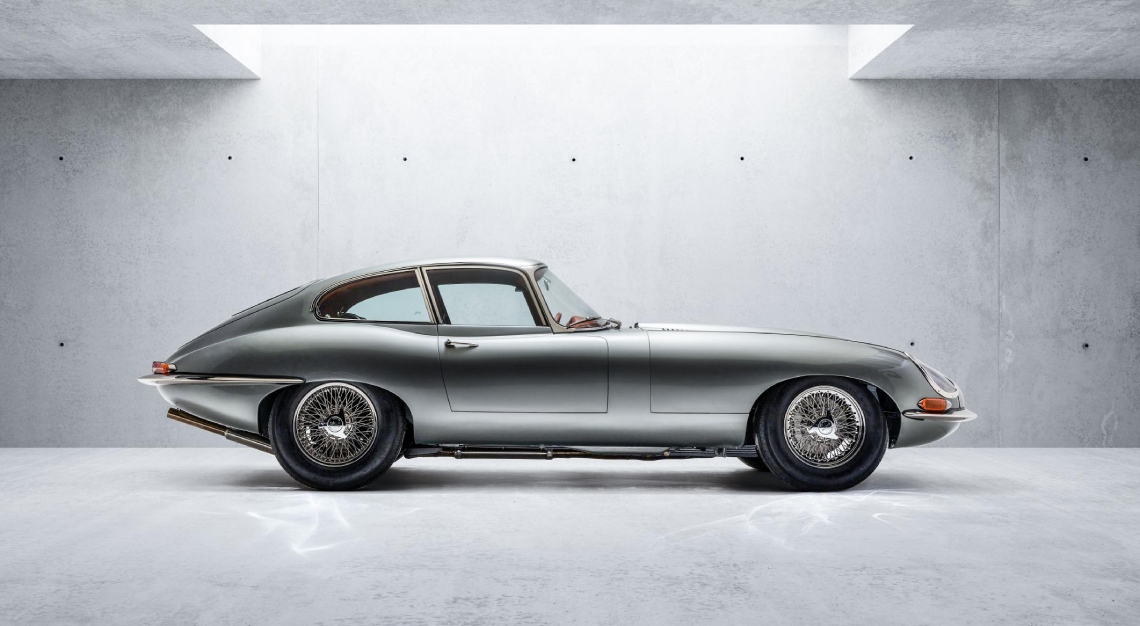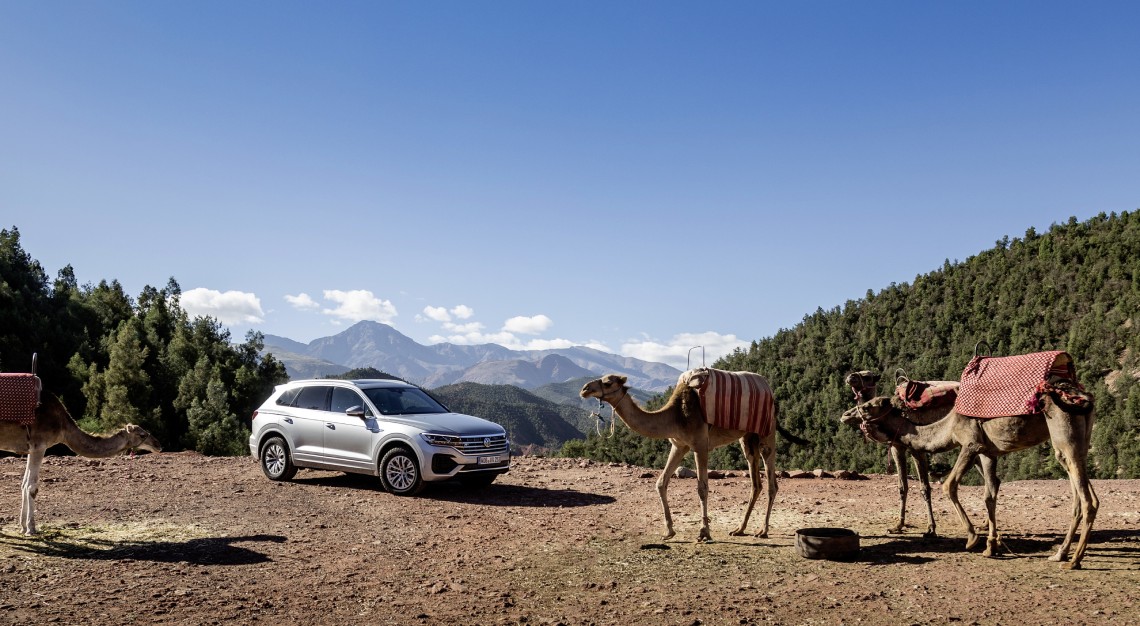Bodies Beautiful
“I love cars,” says Harold Cleworth, “and I’ll always be thankful to my father for showing me the beauty of cars – in a family that didn’t even have one, at that.” Cleworth – who was born in Lancashire, UK, but emigrated to California in the early 1970s – is a master of a rare art genre.

“Every year, I went to the car shows at Earl’s Court in London,” says the man who originally trained as a graphic designer and who, at 76, is proud not to have had a salaried job since his 20s. But, he says, “It never occurred to me to paint cars. When I explain to people what I do, they often just say ‘but why’. And I don’t know – it’s just my subject.”
And he got into it in a big way, as Cleworth’s works are widely collected. The wealthy, such as Ralph Lauren, even commission him to paint their vehicles. “Some people want a painting of themselves, others want one of their wife or children, and others would just prefer a painting of their car,” he jokes. “I’ve visited people and their car is in their living room – to these people the car itself is a work of art.”
Going against the grain
Not that Cleworth will paint anything. Although he has painted modern cars (he did a Tesla recently) they’re not to his taste. “I’m just stuck in the 1950s. When I first came to America and saw all the cars from that period, I was blown away by their sense of humour. I suppose I come at American culture from an Englishman’s perspective, but they do appreciate their cars here too. Look at Latinos with their low-riders. They may be tasteless, but they do that bad taste so well. They put a smile on your face.”
In 1997, a prominent American automotive magazine asked Cleworth to paint a car for the cover. Images of the car had not yet been released to the public.
“It was for a new Porsche. I was familiar with their previous models and so it wasn’t a stretch to imagine what the next one would look like. And apparently I got it pretty much right. It upset Porsche because, although it was a painting, they thought the magazine had gotten hold of an unofficial image. I was kind of glad it pissed them off – I’ve never been much of a Porsche man.”
Cleworth’s style has since moved on to become more painterly. Rather than trying to mimic the effects of a photograph, he says paint adds another layer of realism. “It gives the car something extra in a way a photo can’t. You end up with something more intense, larger than life.”
Looking Back

Cleworth concedes that some of his paintings, collected in An Artfull Life, leave him with a “what was I thinking then?” feeling. “Sometimes you finish a painting and think ‘okay, that’s a good one’ and with others you realize you’ve made mistakes, which you learn from, of course, but you never get around to re-doing the painting,” he says. “Some paintings I look back on now and I’m not sure how I did them. They’re so precise. I’m looser with the brush these days.”
But not so loose that the effect doesn’t still express a certain virtuoso brushwork – as accurately depicting a subject that is all shiny surfaces must. It is the reflections on the surfaces, Cleworth explains, that give any car painting life, “because you’re showing people something they’ve seen many times but haven’t noticed – what’s in the reflection, the sky, the surroundings…”
The secret? “Mixing the colour of the sky with the colour of the car,” he says, as though this is a simple task, “but above all, avoiding making it look as though the reflections have been painted onto the car. That looks wrong.” Cleworth’s beginning as a graphic designer has certainly helped, in terms of his composition, for example. He quite possibly could have had a long and successful career in that field instead. His first job out of college was designing album covers for Decca Records. This was at a time when appreciation for them as a form of artistic expression, rather than merely a marketing necessity, was just taking off.
Commissioned Work
“I don’t think I did anything of note,” Cleworth says, before revealing that among his output were album covers for The Rolling Stones and The Who.
Certainly some of his car paintings are still made for the world of commercial art. Since the mid-1980s he has been in demand to paint for car show posters, including for prestigious events such as the Greater Los Angeles Auto Show and Pebble Beach Concours d’Elegance.
His first commission for Pebble Beach Concours had to feature a vintage Alfa Romeo that, unfortunately for the artist, was still in England, in boxes. Cleworth painted it from photos of various parts of the car sent to him by the organiser. Once the painting was finished, they asked if he could turn the car “a little bit to the right”.







